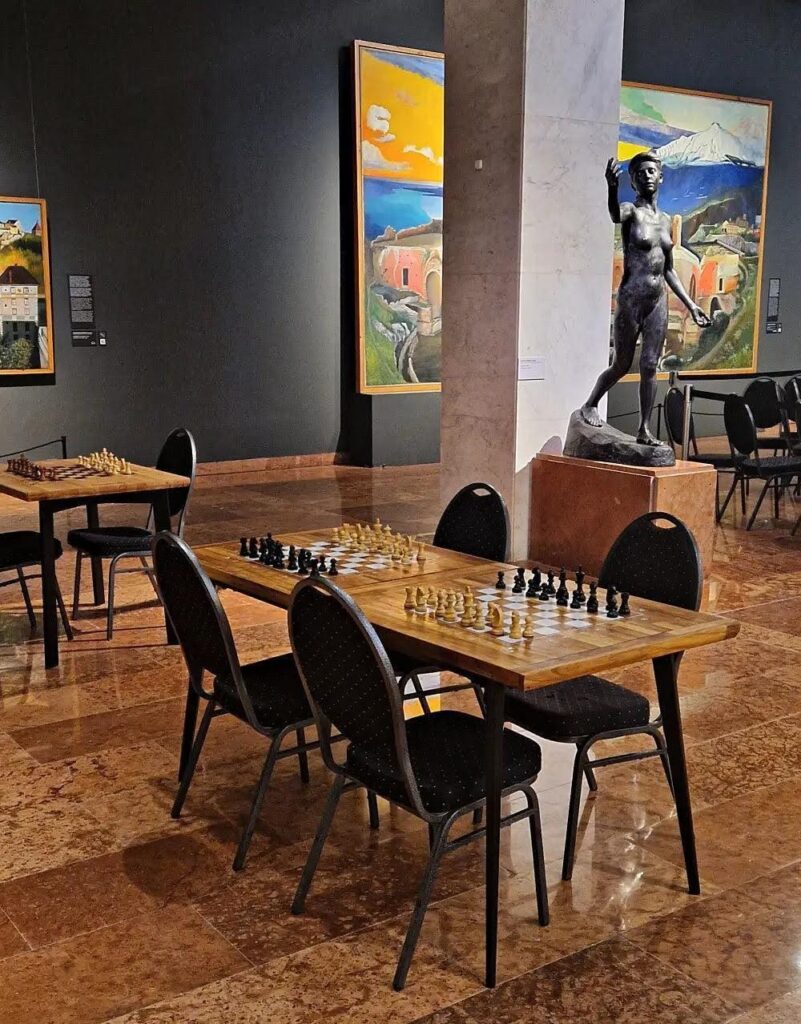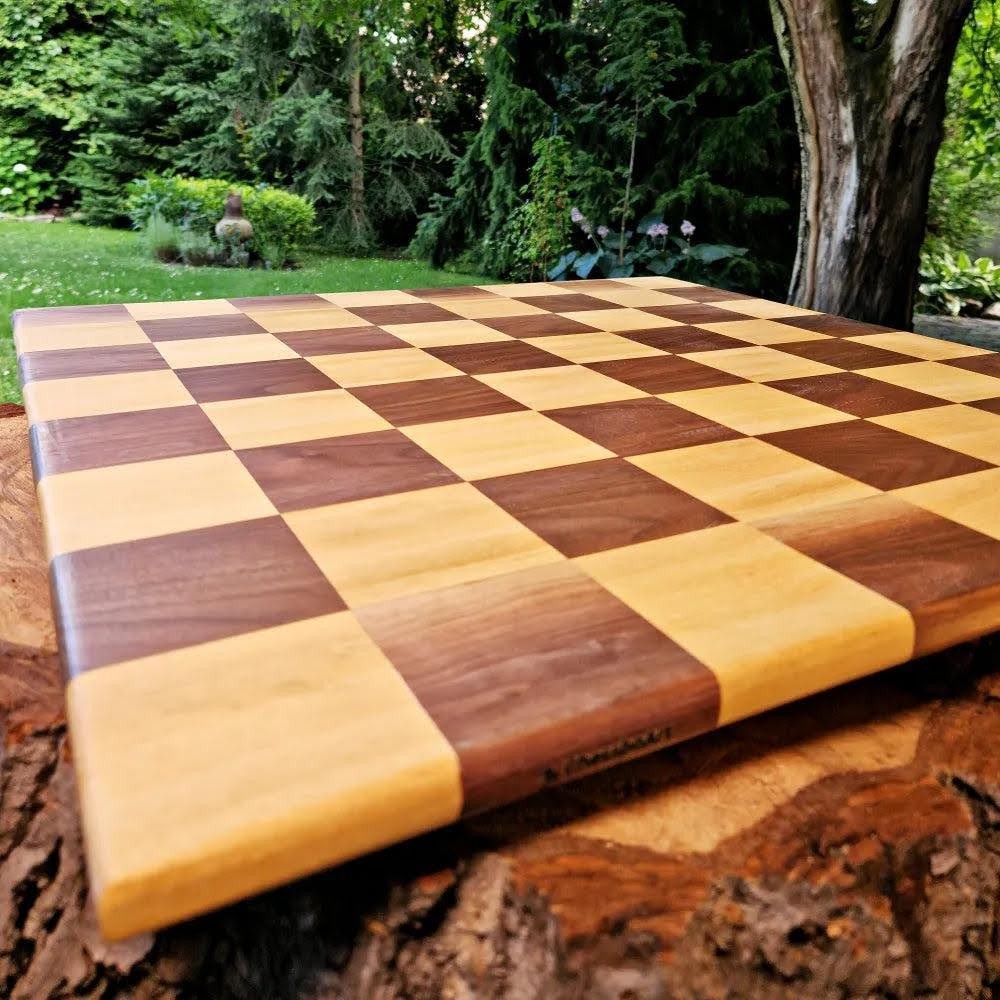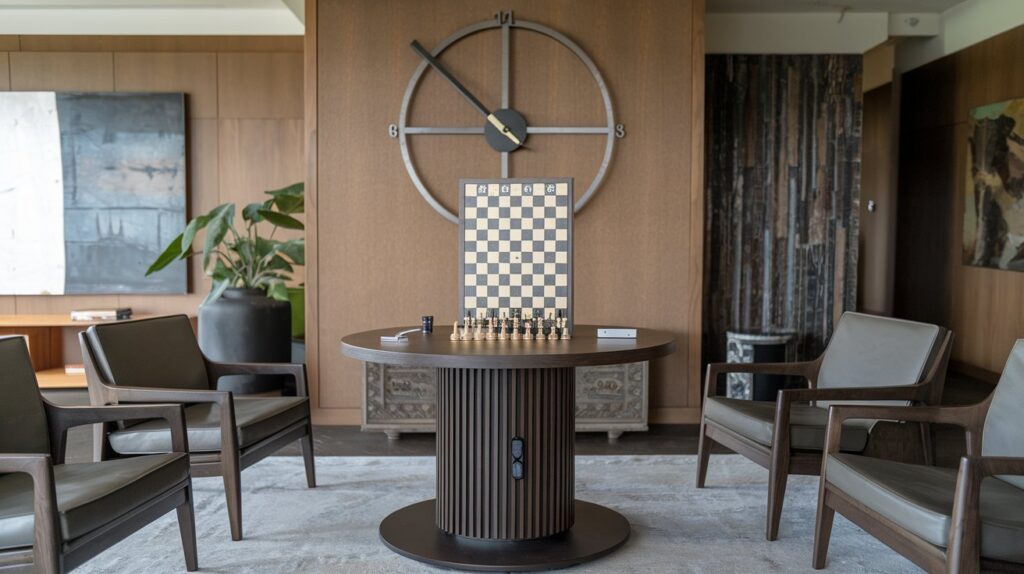Why the quiet geometry of chess is becoming one of interior design’s most unexpected statements.
Design trends are cyclical, but the best ones evolve instead of disappearing. As homeowners look for meaning beyond minimalism, a new movement has emerged – one that values craft, ritual, and tactile connection. This is the era of functional art: pieces that serve a purpose yet feel sculptural, objects that invite touch, thought, and time. And few expressions of this idea are as quietly powerful as chess.
Long before it became a cinematic metaphor or a cultural shorthand for intellect, chess was a form of architecture in miniature. Sixty-four squares, perfect proportion, symbolic order – the board is a study in balance. Today, artists and artisans are reinterpreting that geometry through modern materials, reintroducing chess as a design language for the home.
When play becomes art – handcrafted chess tables merge precision and soul.
The evolution of chess as design

We’ve seen this shift before – from handcrafted ceramics to analog sound systems – where heritage techniques find their place in contemporary living. Chess, too, has crossed that threshold. No longer confined to clubs or dusty boards, it now lives proudly in living rooms and offices, reimagined as wall installations or centerpiece tables.
This evolution is largely driven by makers who understand both design and gameplay. One such studio, ChessboArt, bridges those worlds with exceptional craftsmanship. Their bespoke collection treats chessboards like pieces of collectible furniture – blending precision CNC engraving, solid hardwoods, and natural finishes into art that’s meant to be used, not just admired.
Vertical chessboards: sculpture that moves
Perhaps the most distinctive innovation in this space is the vertical chessboard. It transforms the classic board into a sculptural relief – a conversation piece that invites participation. Hung like a painting, it turns an empty wall into a dynamic element of the room. The geometry becomes kinetic, as every move alters the composition.
Beyond its aesthetic value, the vertical format solves practical challenges. It fits comfortably in small apartments or modern studios, offering a game that never needs to be set up or put away. It’s the intersection of design discipline and daily ritual – a true embodiment of functional art.
Tables that define space

If the wall board is minimal poetry, the chess table is its architectural counterpart. A well-proportioned chess table top can anchor a room like no other object. The square grid, balanced by soft natural wood and subtle grain, draws the eye without demanding attention. It invites you to sit, reflect, and engage.
Designers often treat chess tables as functional sculptures – pieces that bridge the gap between furniture and fine art. The best examples use solid hardwoods such as walnut, ash, or oak, finished in oil or epoxy to create contrast and depth. ChessboArt’s made-to-order table tops are CNC-engraved for precision, with options for epoxy resin infill or traditional inlay. They’re equally at home in an art gallery or a minimalist living room.
Proportion and precision – when craftsmanship becomes spatial poetry.
The clock as the soul of the set
Every game needs rhythm, and in chess, that rhythm is measured in seconds. The gentle tick of a mechanical chess clock transforms a quiet duel of ideas into a symphony of focus. These clocks, once purely utilitarian, are now enjoying a revival as collectible design objects.
In an era obsessed with the digital, the tactile beauty of a restored analog clock feels grounding. The patina of wood, the weight of metal plungers, the faint resistance of the spring – they remind us that time can be felt as well as seen. ChessboArt’s restored vintage clocks exemplify this philosophy. Each one is cleaned, adjusted, and refinished by hand, preserving both accuracy and history. The result is not just a timepiece but a conversation between generations.
Why functional art matters now
Modern life has accelerated, but our need for texture, material honesty, and quiet focus hasn’t disappeared. We crave balance – between work and rest, technology and tactility, speed and intention. Functional art delivers that equilibrium by reintroducing human pace into design.
Incorporating handcrafted elements like a chess table or wall board restores presence to the home. The physical act of moving a piece or winding a clock engages us differently than any digital experience can. It’s a reminder that living beautifully isn’t about perfection – it’s about participation.
Design insights: proportion and placement
- Scale the board to your space. For classic Staunton pieces (3.75-4″), square sizes between 55-60 mm maintain balance.
- Honor symmetry. Center tables under pendant lighting; align wall boards with sightlines from entryways.
- Let materials lead. Pair walnut boards with brass accents, ash with matte black steel – contrasts that speak of craftsmanship.
Art, presence, and play
Ultimately, what makes these objects special isn’t their luxury but their humility. They don’t shout. They whisper – inviting you to slow down, to make a move, to stay a little longer at the table. They embody a form of design that prioritizes longevity and connection over novelty.
As our interiors evolve toward greater intentionality, objects like chessboards, tables, and clocks become symbols of that shift. They remind us that the most meaningful spaces are the ones that grow with us – pieces that age, adapt, and continue to tell stories long after trends fade.
Whether you commission a bespoke art chessboard or integrate a handcrafted solid-wood chess table, what you’re really investing in is rhythm – the subtle, beautiful cadence of time, play, and craft.

